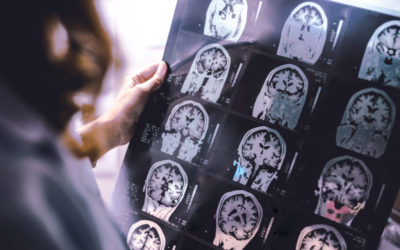
Business and executives in those businesses are more than keen to get a competitive advantage. To this end they invest heavily in technology and getting the right people to do the job.
But, I am sure, we are all more than aware that the work environment is also crucial to high performance. And this study, just out, gives an interesting take from a large dataset on this. The researchers around Alexander McKay at Virginia Commonwealth University analysed data from 11,000 surveys of employees sharing everyday work experiences and rated these into factors that stimulate or inhibit creativity. Creativity being a key metric to getting a competitive advantage for businesses.
What did they find?
Analysing the data showed that they could categorise the types of days that employees had into five categories:
-
-
- Toxic days: these are days that are high in conflict, obstacles and are missing stimulant factors. Fortunately, “only” 8% of days.
- Disengaged days: these are das that are low in all factors and represent disengagement and make up about 10% of days.
- Typical days: these are days that are well, average, a moderate amount of stimulance but also obstacles. These account, unsurprisingly for the majority of days. About 34% of days.
- Ideal days: these are the days we should probably aspire to with high stimulant factors but low obstacles and conflict. Notably they still had time pressure. These make up about 30% of workdays (which ain’t too bad actually).
- Crises days: these are days that are high in stimulant factors but also high in obstacle factors which seem to be around “good” conflict and wrestling with key problems. These make up about 20% of days.
-
So, in a hypothetical week, employees are in a bad place for half a day, disengaged for another half, in typical work mode for 1.5 days, in optimal work mode for 1.5 days, and spend 1 day in crises mode.
The next question is are these positive days actually better for creativity?
And this was a resounding yes. Those days which are ideal days rated much higher on creativity output but they also note that workers’ perceived creativity and productivity may actually be mismatched. The data for example shows that crises days are not as creative as workers rate them. Another note is that these days don’t average out as I did above nicely mixed up over a week. They tend to occur concurrently, so a toxic day is more likely to follow another toxic day. This can increase stress significantly – this shows that there can be a tendency to get in a rut – a positive one, or a negative one.
This also means it is important to try to manage this proactively.
This is therefore another piece of impressive and solid evidence as to why helping workers to have a good day at work will reap dividends for any business.
So what’s stopping you or your business making this happen?

Andy Habermacher
Andy is author of leading brains Review, Neuroleadership, and multiple other books. He has been intensively involved in writing and research into neuroleadership and is considered one of Europe’s leading experts. He is also a well-known public speaker speaking on the brain and human behaviour.
Andy is also a masters athlete (middle distance running) and competes regularly at international competitions (and holds a few national records in his age category).
Reference
Alexander S. McKay, Mayoor Mohan, Christopher S. Reina.
Another day, another chance: Daily workplace experiences and their impact on creativity.
Journal of Product Innovation Management, 2021; 39 (3): 292
DOI: 10.1111/jpim.12573
More Quick Hits
How Gratitude between Co-Workers Lowers Stress and Increases Performance
Quick HitsDaily brief research updates from the cognitive sciences ratitude is a nice thing to have, I think we all agree on that. But when it comes to the workplace some may see it is just being nice, and not being focused enough on the hard...
Brain Scans Can Predict Your Political Affiliation
Quick HitsDaily brief research updates from the cognitive sciences rain scanning of political partisans is not new and it has long been reported that brain scans can predict political affiliation. But those studies were scans of political partisans...
Children with Same-Sex Parents Are Socially Well-Adjusted
Quick HitDaily brief research updates from the cognitive sciences his is not the first study to report that children of same-sex parents are well adjusted, there are plenty, but it is one of the first to be representative and hence gives some...
Simple Exposure to New Things Makes Your Brain Ready to Learn
ouldn’t it be great if we could learn things with no effort? Well, actually we often do, and children learn vast quantities of information, and knowledge with little to no effort – think of how well we learn languages which become fiendishly...
So, Can Cranberries Improve Memory?
tend to be hesitant to report on studies of single foods doing amazing things (because many do), but this piece of research still caught my eye. So, what did this group of researchers from the University of East Anglia find? Well, they...
The Real Problem with Social Media: It Induces Dissociative States
Quick HitsDaily brief research updates from the cognitive sciences ocial media seems to hijack our brains – or at least according to popular narratives. Most of us have experienced this where you get stuck in an endless stream of content,...






